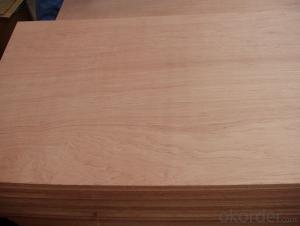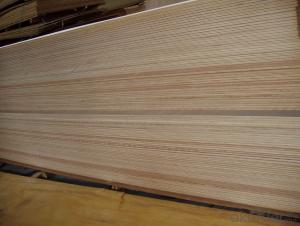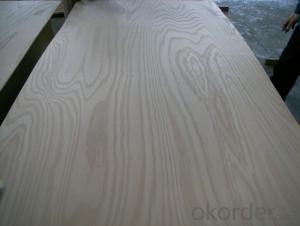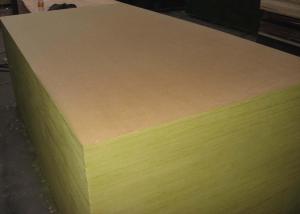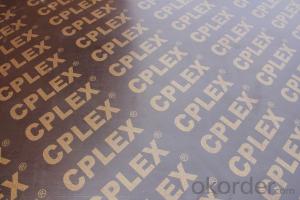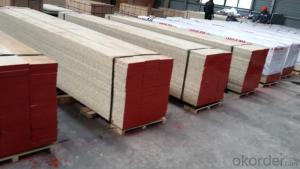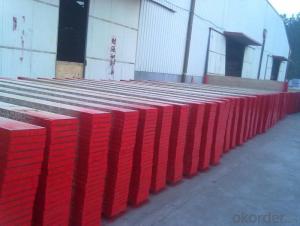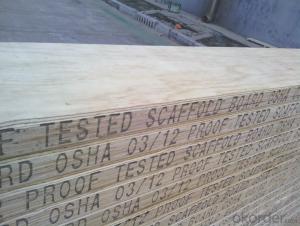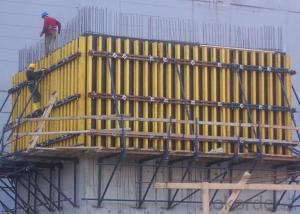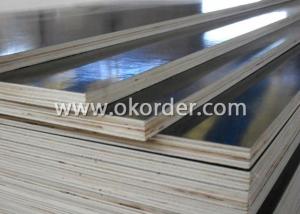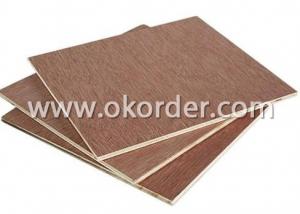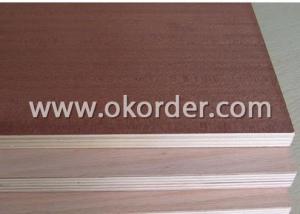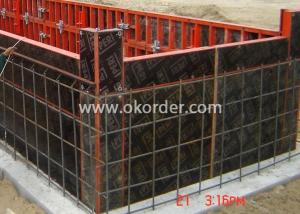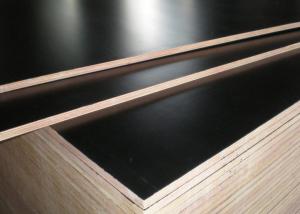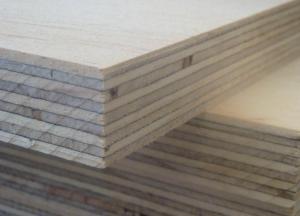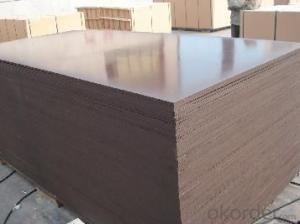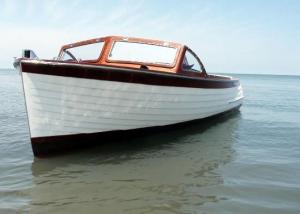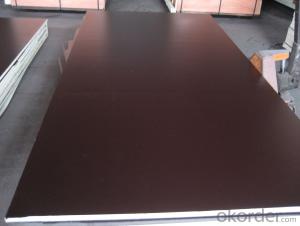Door Skin Poplar Core Plywood In Different Sizes
- Loading Port:
- Qingdao
- Payment Terms:
- TT OR LC
- Min Order Qty:
- 5000 pc
- Supply Capability:
- 5000000 pc/month
OKorder Service Pledge
OKorder Financial Service
You Might Also Like
Description of Door Skin:
Product Name: Slice Cherry plywood
Face/Back: Cherry
Core: Poplar,Hardwood,Pine,Birch,Eucalyptus,Combi etc
Size:1220×2440mm,1250×2500mm,1220×2150mm,1830×3660mm etc
Thickness: 2.7-30MM
Thickness Tolerance: +-0.1mm~0.3mm <=6mm< +-0.3mm~0.5mm >6mm
Glue:WBP/MR/MELAMINE/E0/E1/E2
Grade:BB/BB BB/CC CC/CC etc
Moisture: 8-14%
Process of Engineered Veneer Wood:
Log Selection
EV is generally produced from Chinese Poplar logs, grown locally either by local co-operatives,
or in registered plantation areas. The light natural colour and soft grain definition of Poplar makes it wellsuited to the production of EV. The process of converting timber into EV starts with the selection of logs, following which they are bought to the mill for processing. The timber is trimmed, sawn to length and debarked. The logs are now ready to be peeled.
Peeling of the Logs
The logs are mounted onto a giant lathe. Within minutes the logs are peeled into rotary veneers. This is achieved by pressing a rotating log towards a large blade, thinly peeling a continuous sheet of veneer off the log. The veneer is dried, stacked and then graded. It is now ready to be dyed.
Drying
EV veneers can be dryed to a consistent colour to suit the market requirement. The raw veneer leaves are stacked into a stainless steel cage. Once completely loaded, the stainless steel cage is immersed into a pressurized, heated vat that is filled with water soluble dry. This system ensures that each leaf is given the correct amount of time to allow the dry to completely penetrate each individual leaf of veneer. Once the desired colour has been achieved, the leaves are unloaded from the vat, dried and given a final inspection before going to the gluing stage.
Gluing
The gluing process is critical for the performance of the finished product. A layer of glue goes between each leaf of veneer, to bond the leave of veneer together. Once the stack has been laid up it is then put into a high pressure press to bond the leaves together, creating a large rectangular block.
Slicing of the Block
The block in now ready to be sliced into veneer leaves. Once the block has been produced, it is turned through 90 degrees, to present the end grain, then mounted to the slicing unit. The blade now runs across the end grain of the block, slicing thickness controlled leaves of veneer. The veneer leaves that are produced are approximately 0.4mm thick, and in 2440 x 1220 format. The veneer is now ready to be used as face veneer for Eucalyptus and Poplar core plywood products.
Packing Details of Door Skin:
MOQ: 40HQ
Packing Details: 20GP 8pallets/21M3
40GP 16pallets/42M3
40HC 18pallets/53M3
Payment Terms: 30%T/T in advance,70%L/C
Delivery Time: 15 to 20 days after receiving 30%T/T down payments
Technical Data of Door Skin:
Grade Description | AA | A | B | C | D | E | ||
Sapwood | No | No | Slight color difference | Slight color difference | Yes | Yes | ||
Heartwood | No | No | No | Slight color difference | Yes | Yes | ||
Color Streaks or Spots | Slight | Slight | Slight color difference | Slight color difference | Yes | Yes | ||
Color Variation | No | No | Slight | Slight | Yes | Yes | ||
Sharp Color Contrasts at Joints | No | No | No | Slight | Yes | Yes | ||
Type of Matching Book Matched Slip Matched Pleasing Matched |
Yes Specify -- |
Yes) Specify -- |
Specify Specify Yes |
-- -- -- |
-- -- -- |
-- -- -- | ||
Nominal Minimum Plain-S Width of Face Quarter 1/4 Componentsa Rotary | 152 mm 76 mm 152 mm | 127 mm 76 mm 127 mm | 76 mm 76 mm 102 mm | No Limit | ||||
Small Conspicuous Burls & Pin Knots-Combined Avg. Numbe | 2 per 1m2
| 4 per 1m2
| 6 per 1m2
| No Limit | ||||
Conspicuous Burls-Max. Size | 6.4 mm | 9.5 mm | 12.7 mm | No Limit | ||||
Conspicuous Pin Knots Avg. Number Max. Size: Dark Part Total |
No |
No |
3 per 3 m2 3.2 mm 6.4 mm | No Limit | ||||
Scattered Sound and Repaired Knots-Combined Avg. Number Max. Size-Sound Max. Size-Repaired Avg. No.-Repaired | No | No |
4 per 3 m2 9.5 mm 3.2mm 4 per 3 m2
|
3 per 1 m2 1 2.7 mm 12.7 mm 4 per 3 m2 |
4 per 1 m2 25.4 mm 19 mm 2 per 1 m2 |
No Limit 38 mm 25.4 mm 1 m2 | ||
Mineral Streaks | No; Maple, Slight | Slight
| Slight
| Slight | Yes | Yes | ||
Bark Pockets | No | No | Few to 3.2mmx25.4mm | Few to 6.4mmx50.8mm |
6.4mmx50.8mm |
Yes | ||
Worm Tracks | No | No | Slight | Slight | Yes | Yes | ||
Vine Marks | Slight | Slight | Slight | Yes | Yes | Yes | ||
Cross Bars | Slight
| Slight | Yes | Yes | Yes | Yes | ||

- Q:Plywood in the processing of defects
- sand through sandlng through due to excessive sanding the table, local wear exposed layer or the next layer of veneer
- Q:How to use building plywood?
- Building plywood is mainly used in outdoor conditions, such as building decoration and concrete template
- Q:Plywood is a common material for furniture?
- With the veneer after the wood by the direction of the criss-cross the composition of the slab, heated or not heated under the conditions of suppression.
- Q:What are the further processing of plywood?
- plywood plywood through mechanical finishing or gluing, such as cutting, profiling sawing, hitting, drilling, milling and other processed plywood
- Q:For the plywood environmental advice?
- Phenolic glue: moisture, excellent resistance to boiling, weather resistance / can be used for outdoor or indoor, can withstand outdoor wind and rain.
- Q:Why is the plywood commonly used in the singular layer
- This is a good understanding of the regardless of the plywood and plywood they are for the sake of their each of them are vertical lines of the
- Q:Plywood can improve timber utilization and is a major way to save wood.
- Also available for aircraft, ships, trains, cars, construction and crates and other materials.
- Q:Judging wood is the standard for plywood
- Rare wood is only used to make very upscale furniture, and is often used in combination with lower-priced wood
- Q:What are the advantages and disadvantages of plywood?
- and then made of adhesive glue from the three or more layers of plate-like material
- Q:Commonly used plywood, pallets and so on
- so it will not crack, but it can not be called solid wood, and now the market has solid wood particle board, MDF, particleboard and other components of the plate Is wood chips, sawdust,
1. Manufacturer Overview |
|
|---|---|
| Location | |
| Year Established | |
| Annual Output Value | |
| Main Markets | |
| Company Certifications | |
2. Manufacturer Certificates |
|
|---|---|
| a) Certification Name | |
| Range | |
| Reference | |
| Validity Period | |
3. Manufacturer Capability |
|
|---|---|
| a)Trade Capacity | |
| Nearest Port | |
| Export Percentage | |
| No.of Employees in Trade Department | |
| Language Spoken: | |
| b)Factory Information | |
| Factory Size: | |
| No. of Production Lines | |
| Contract Manufacturing | |
| Product Price Range | |
Send your message to us
Door Skin Poplar Core Plywood In Different Sizes
- Loading Port:
- Qingdao
- Payment Terms:
- TT OR LC
- Min Order Qty:
- 5000 pc
- Supply Capability:
- 5000000 pc/month
OKorder Service Pledge
OKorder Financial Service
Similar products
New products
Hot products
Hot Searches
Related keywords

